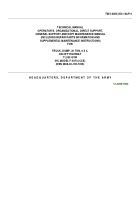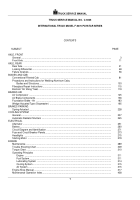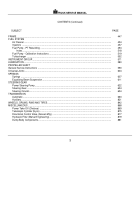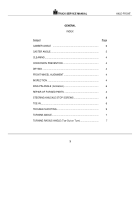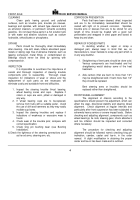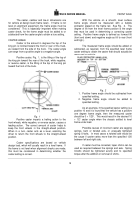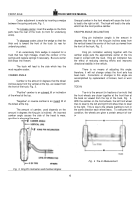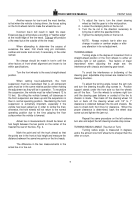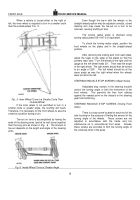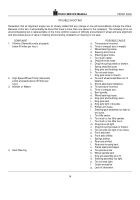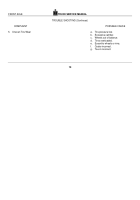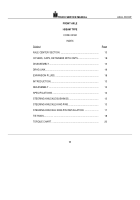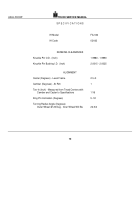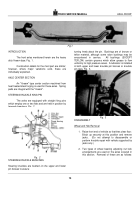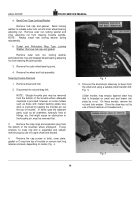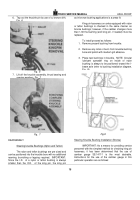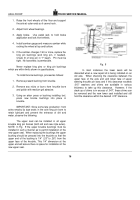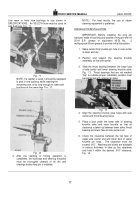TM-5-3805-254-14-P-2 - Page 9 of 894
TRUCK SERVICE MANUAL
FRONT AXLE
Another reason for toe-in and the most familiar,
is that when the vehicle is being driven, the forces acting
on the front wheels tend to make the wheels toe out.
Incorrect toe-in will result in rapid tire wear.
Excessive toe-in will produce a scuffing or "feather-edge"
at the inside edge of the tire tread.
Toe-out will produce
a like wear but at the outside of the tire tread.
When attempting to determine the causes of
excessive tire wear, first check king pin inclination,
camber and caster and correct, if necessary, in the order
named.
No change should be made in toe-in until the
other factors of front wheel alignment are known to be
within specifications.
Turn the front wheels to the exact straight-ahead
position.
When setting toe-in-adjustment, the front
suspension must be neutralized; that is, all component
parts must be in the same relative position when making
the adjustment as they will be in operation.
To neutralize
the suspension, the vehicle must be rolled forward 12 to
15 feet.
By rolling the vehicle forward, all tolerances in
the front suspension are taken up and the suspension is
then in normal operating position.
Neutralizing the front
suspension is extremely important, especially if the
vehicle has been jacked up in order to scribe the tires;
otherwise, the front wheels will not return to the normal
operating position due to the tires gripping the floor
surface when the vehicle is lowered.
Actual toe-in measurements should be taken at
hub height between the two points on the center of the
tread at the rear of the tires, Fig.
4.
Mark the point and roll the truck ahead so that
the points are in the front at hub height and measure the
distance between the same two points on the tire treads.
The difference in the two measurements is the
actual toe-in or toe-out.
1. To adjust the toe-in, turn the steeri steering
wheel so that the gear is in the mid-position.
2. Loosen the clamping bolts on the tie rod.
3. Turn the tie rod in the direction necessary to
bring toe-in within the specified limits.
4. Tighten the clamping bolts on the tie rod.
NOTE:
Always recheck toe-in after any
change in caster or camber angles or after
any alteration in tie rod adjustment.
TURNING ANGLE
Turning angle is the degree of movement from a
straight-ahead position of the front wheels to either an
extreme right or left position.
Two factors of major
importance when adjusting the angle
are;
tire
interference with chassis and steering gear travel.
To avoid tire interference or bottoming of the
steering gear, adjustable stop screws are located on the
steering knuckles.
To adjust the turning angle, loosen the jam nuts
and turn the steering knuckle stop screws in.
Position
support stands under the front axle so that the wheels
are off the floor.
Turn the wheels to extreme right turn
until the steering gear bottoms or contact of the tire to
chassis is made.
Then back off the steering wheel 1/4
turn or back off the steering wheel until 1/2" to 1"
clearance is obtained between the tire and chassis.
Be
sure to check both front tires for clearance.
When the
proper clearance is determined, back the wheel stop
screw out and tighten the jam nut.
Repeat the same procedure on the left extreme
turn also and adjust the left steering knuckle stop screw.
TURNING RADIUS ANGLE (Toe-Out on Turn)
Turning radius angle is measured in degrees
and is the amount one front wheel turns sharper than the
other on a turn.
7
Back to Top

